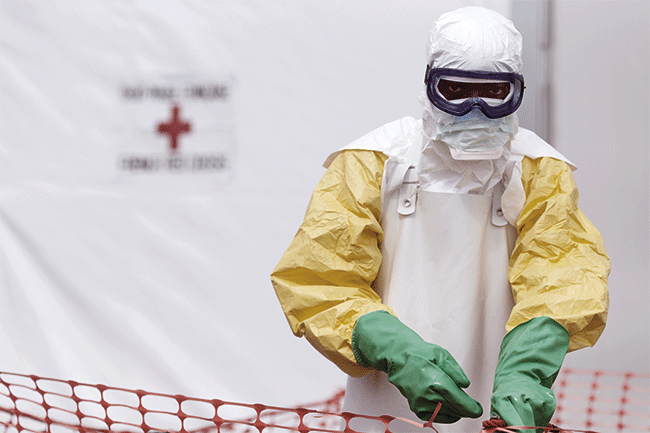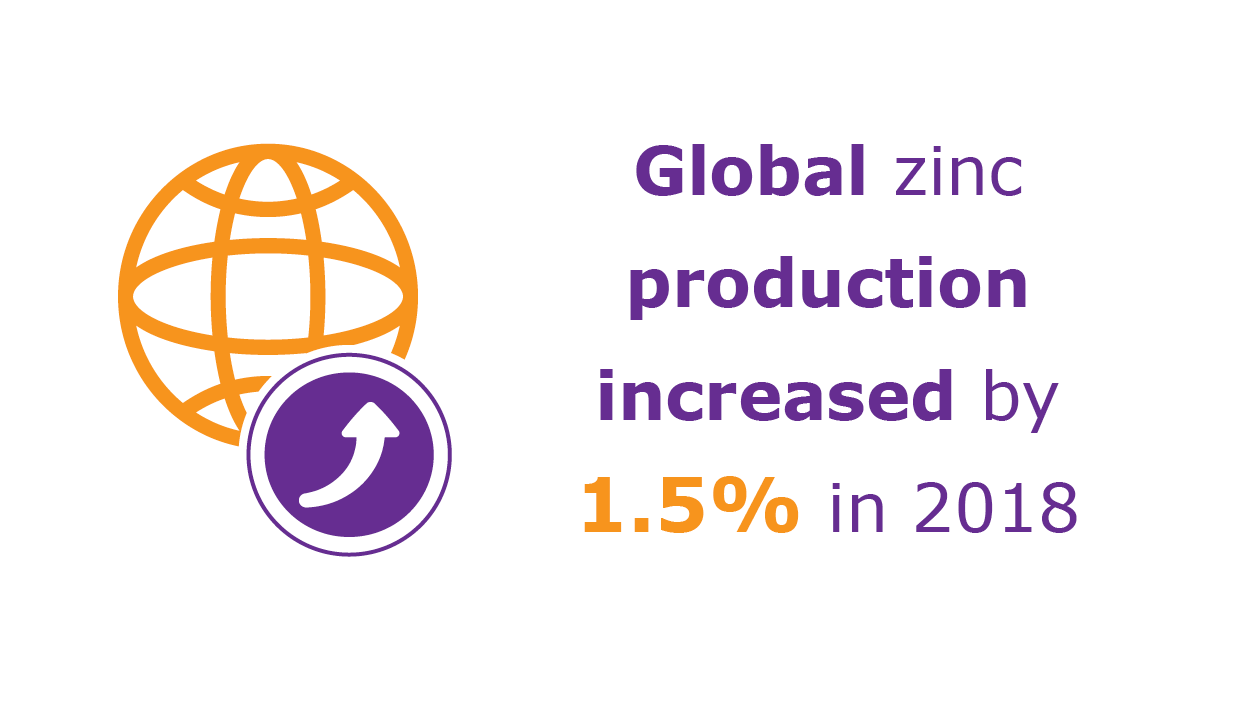A radio station in remote Beyla, in south-eastern Guinea, can broadcast Ebola prevention measures to citizens, thanks to the 1 800 litres of fuel that Rio Tinto donated to power its generator. Then there are the mobile treatment camps, medical equipment, 3 000 prevention kits and 1 000 ThermoFlashes (which measure temperature) that the British-Australian mining house has given – plus millions of dollars in donations – to help prevent the disease.
The business of mining has taken a back seat to health in West Africa over the past year. It’s had to. ‘In October 2014, the IMF cut its 2014 Africa growth forecast to 5% from 5.5%, partly because of Ebola’s effect on trade, investment and travel. That’s before you get to the human tragedy of 6 331 deaths and 17 800 infections since March,’ reported the Financial Mail.
While the epidemic has not been detected at any mine in the worst-hit countries of Guinea, Sierra Leone and Liberia, disruptions have made it difficult to operate normally. The region is rich in gold and iron ore, which has attracted some of the world’s biggest miners, including BHP Billiton, Rio Tinto, ArcelorMittal, Randgold Resources and AngloGold Ashanti.
They generate a considerable portion of the GDP in West Africa, particularly in Sierra Leone, where most of the confirmed Ebola cases have been reported.
The response to the epidemic has been varied. Some companies initially responded by making donations to UN agencies, including the World Health Organisation (WHO) and Unicef, and intensifying their already existing community-health education programmes. Others bailed out of the region completely.
Rio Tinto, the world’s third-largest mining company, which owns a share of the Simandou project in southeast Guinea, has to date donated US$3.4 million to fighting the epidemic. This includes US$2.9 million towards vehicles and a helicopter, as well as mobile camps to increase treatment capacity.
ArcelorMittal’s performance response has also been impressive. The company, which has about 4 500 local employees on the ground in Liberia, began engaging with Ebola experts at
the first outbreak to ensure that operations and medical facilities were equipped to deal with the disease. As of October 2014, ArcelorMittal’s external commitments and expenditures have exceeded US$1.3 million to help combat the disease in the country. This includes cash and equipment donations to NGOs, as well as the company’s own hospitals.
It has also launched the Ebola contact tracing and surveillance (ECTAS) project. The ECTAS is a 90-day pilot initiative that supports local communities and county task forces to track, survey and report on potential and actual human contact with people who are confirmed, most likely or suspected of having the disease.
Mining companies’ broader, ongoing response to community and workforce healthcare needs has also come under scrutiny in the wake of Ebola. Some 30% of global mineral reserves are in Africa. The majority of mining activity occurs in South Africa, Ghana, Zimbabwe, Tanzania and the DRC, according the Mining Health Initiative, a study published in 2013 that aims to explore the sector’s contribution to good health by marshalling evidence of effective practice.
Mining activity also generates more than 30% of GDP in Sierra Leone, Namibia, Zambia and Botswana.
Operations throughout sub-Saharan Africa are being challenged by public health epidemics such as HIV/Aids, malaria and tuberculosis (TB). Public healthcare systems don’t have the capacity to provide quality services and private facilities don’t provide sufficient access to communities, according to the initiative.
The IMF cut its Africa growth forecast to 5% from 5.5%, partly because of Ebola’s effect on trade, investment and travel
As business and technology researcher and analyst Noshua Watson points out in an article for scidev.net, a website that focuses on science and development analysis, mining companies are often the most capable institutional presence in geographically isolated areas. These firms have greater financial and organisational resources than local and national public health agencies. In sub-Saharan Africa, they already devote substantial resources to health initiatives related to HIV/Aids, malaria and TB.
Mining has a long history of engagement with communities, much of it negative, with these companies being accused of exploiting people and resources.
Dave Clark, deputy CEO of the Aurum Institute, a South Africa-based public benefit organisation that focuses on health, writes in a paper co-authored with Fazel Randira: ‘Due to difficult geographical and environmental conditions and the inherently dangerous work of extracting mineral wealth from the Earth, healthcare has been a close companion of formal mining in Africa since the day the first rock was broken.’
Mining companies have partnered with host countries to augment national services by providing equipment, drugs and/or trained personnel. To counter the socio-political discontent this disparity creates, many firms have extended health services to the wider community, allowing locals to ‘feel the benefits of their country’s natural wealth in tangible and important ways’, write the authors.
Mining companies have an integral part to play in fighting TB, a century-old scourge among mineworkers in South Africa
In South Africa, the fall of apartheid in 1994 and the introduction of the Mining Charter in 2002 led to a process designed to transform the relationship between mines and their surrounding communities. With their massive corporate social investment (CSI) spend and sophisticated programmes, many firms go above and beyond mere compliance with the charter.
The amount of money that mining firms spend on socio-economic and local economic development projects is significant. Reported expenditure by South Africa’s top four mining companies exceeds ZAR1 billion per annum, says Nick Rockey, MD of Cape-based CSI analytics firm Trialogue.
Healthcare forms a great portion of the spend. Naysayers will point to window dressing and interventions making ‘good business sense’. However, there have been huge strides towards combating the disease, thanks to these companies’ often innovative programmes.
Take malaria, for example. Apart from the usual responses of providing workers with access to the latest diagnostics and drugs, some mining firms, affected by the absenteeism and community impact of the disease on their operations, have taken the unusual step of getting involved in public health interventions affecting whole regions of malaria-endemic countries.
In Mozambique, Zambia, Mali and Ghana, these businesses have partnered with public health officials and academic experts to implement vector control programmes to eradicate anopheles mosquitoes and their breeding places in large areas of land surrounding the mines.
AngloGold Ashanti, the world’s third-largest gold producer, says that malaria is ‘the most significant public health threat’ to its operations in West Africa. It also identified the infectious disease as the leading cause of absenteeism at work and low productivity among its workforcein 2004. The business launched a multipronged malaria control campaign of indoor residual spraying, which targeted larval source reduction, provided prompt and effective treatment and an intensive community sensitisation programme, which aimed to halve the number of recorded malaria cases in its Obuasi mine hospital within two years.
The programme cost the firm US$1.3 million a year but over the same period, treatment costs at the mine’s hospital dropped from US$55 000 to US$9 800 a month, while work days lost each month fell from 6 983 to just 282.
Mining companies also have an integral part to play in fighting TB, a century-old scourge among mineworkers in South Africa, with infection rates 10 times higher than what the WHO classifies as an emergency.
Through its interventions, Anglo American has managed to halve incidences of infections at its coal mines over the past two years. The current rate is under 340 cases per 100 000 workers.
Then there are the community health programmes that bring relief, upliftment and development to thousands in the areas where mines operate.
For example, Lonmin, the British producer of platinum group metals that spent some ZAR1.5 million on healthcare in 2014, pledges to ensure that local communities have access to primary healthcare facilities within 5 km of their homes. The company’s support ranges from upgrading existing clinics to building new facilities, which it ensures are in line with the needs of the local people.
Since 2007, Lonmin has funded the building of the Wonderkop Clinic, upgraded a two-room structure at Modderspruit into a fully-fledged clinic and extended the Marikana Clinic to accommodate increasing numbers of patients.
Another facility has been built in Limpopo, at a cost of ZAR10 million, that is currently used by the Hwelereng and Mokushoaneng communities as well as their neighbours.
Furthermore, various clinics in surrounding areas have been upgraded to accommodate additional services.
Lonmin has also donated mobile clinics and an ambulance to the Department of Health. An obstetric ambulance is being used for pregnant women in the Madibeng sub-district. Two mobile clinics provide health services to schools in the greater Lonmin area and the Madibeng and Rustenburg sub-districts. This ensures that schoolchildren have access to basic health services and referral networks.
The Mining Health Initiative study concluded that health programmes in the mining sector have a ‘positive net benefit, both for work- forces and communities’.
They lead to lower recruitment costs for new employees, higher productivity and lower absenteeism.
At community level, these ‘mining health programmes appear to slow infection rates, improve the quality of care and reach neglected members of the community like women and youth’.
Moral imperative, good business sense, following the rules… Call it what you will, mining is a key player in creating good health in Africa.






